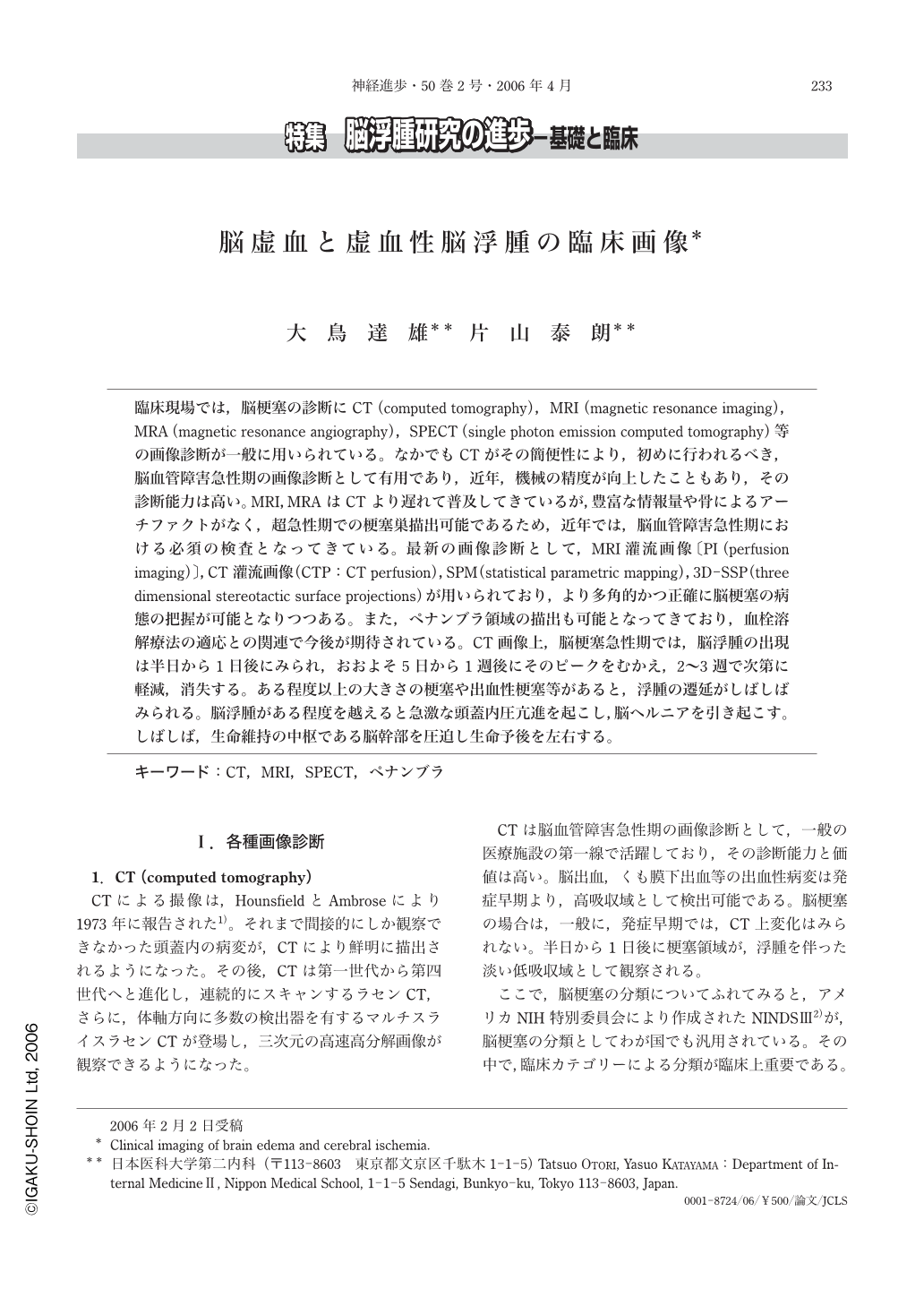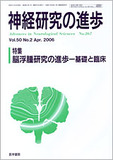Japanese
English
- 有料閲覧
- Abstract 文献概要
- 1ページ目 Look Inside
- 参考文献 Reference
臨床現場では,脳梗塞の診断にCT(computed tomography),MRI(magnetic resonance imaging),MRA(magnetic resonance angiography),SPECT(single photon emission computed tomography)等の画像診断が一般に用いられている。なかでもCTがその簡便性により,初めに行われるべき,脳血管障害急性期の画像診断として有用であり,近年,機械の精度が向上したこともあり,その診断能力は高い。MRI,MRAはCTより遅れて普及してきているが,豊富な情報量や骨によるアーチファクトがなく,超急性期での梗塞巣描出可能であるため,近年では,脳血管障害急性期における必須の検査となってきている。最新の画像診断として,MRI灌流画像〔PI(perfusion imaging)〕,CT灌流画像(CTP:CT perfusion),SPM(statistical parametric mapping),3D-SSP(three dimensional stereotactic surface projections)が用いられており,より多角的かつ正確に脳梗塞の病態の把握が可能となりつつある。また,ペナンブラ領域の描出も可能となってきており,血栓溶解療法の適応との関連で今後が期待されている。CT画像上,脳梗塞急性期では,脳浮腫の出現は半日から1日後にみられ,おおよそ5日から1週後にそのピークをむかえ,2~3週で次第に軽減,消失する。ある程度以上の大きさの梗塞や出血性梗塞等があると,浮腫の遷延がしばしばみられる。脳浮腫がある程度を越えると急激な頭蓋内圧亢進を起こし,脳ヘルニアを引き起こす。しばしば,生命維持の中枢である脳幹部を圧迫し生命予後を左右する。
Imaging procedures such as CT(computed tomography), MRI(magnetic resonance imaging), MRA(magnetic resonance angiography), and SPECT(single photon emission computed tomography)are used in clinical settings for the diagnosis and evaluation of cerebral infarction. New diagnostic tools used very frequently include MRI diffusion imaging, MRI perfusion imaging, CT perfusion imaging, and three dimensional CT imaging. Early CT signs, MRI diffusion weighted images, MRI perfusion images, and CT perfusion images enable the diagnosis of cerebral infarction within 2 to 3 hours after the onset of its symptoms and make it possible to make proper use of a t-PA(tissue plasminogen activator). Differences encountered from time to time between diffusion weighted and perfusion weighted images(diffusion-perfusion mismatch)are considered to represent a penumbra, which is eliminated by the administration of t-PA. Brain edema occurs one day after the onset of cerebral infarction and becomes aggravated from about 5 to 7 days later. A large brain edema may cause brain hernia.

Copyright © 2006, Igaku-Shoin Ltd. All rights reserved.


